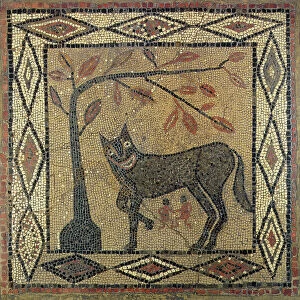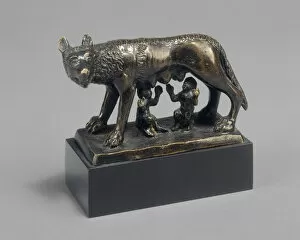Lupa Collection
"Lupa: A Symbol of Nurturing and Power in Ancient Art" The Capitoline Wolf (Lupa Capitolina) suckling Romulus and Remus
All Professionally Made to Order for Quick Shipping
"Lupa: A Symbol of Nurturing and Power in Ancient Art" The Capitoline Wolf (Lupa Capitolina) suckling Romulus and Remus: This iconic bronze sculpture depicts the legendary tale of Rome's founding, symbolizing both maternal care and the city's origins. Capitoline wolf (bronze): Another representation of the nurturing she-wolf, this ancient artifact showcases the craftsmanship and reverence given to this powerful symbol throughout history. Wolf Mosaic, Aldborough Roman Town, Yorkshire, 300 AD: A stunning mosaic discovered in Yorkshire reveals how far-reaching the influence was during Roman times, with her image adorning floors as a testament to her significance. The "Capitoline Wolf", IV century BC (bronze): Dating back centuries before Christ, this remarkable bronze statue exemplifies Lupa's enduring presence in Roman culture as a protector and nurturer. Hemigrapsus penicillatus and Potamon fluviatile: These crab species bear names inspired by Lupa - an indication that even marine life acknowledges her power and influence. Forceps crab, Lupella forceps: Yet another crustacean named after Lupa herself highlights her impact on various aspects of nature beyond just human mythology. Blue swimming crab, Portunus (Portunus) pelagicus: Even modern-day marine creatures carry references to Lupa within their scientific nomenclature – a testament to her timeless allure. The Capitoline Wolf Suckling Romulus and Remus, 15th-16th century (bronze): This later rendition of the famous scene demonstrates how artists continued to be captivated by Lupa's story long after antiquity had passed. Romulus and Remus Suckled by a She-wolf, 15th century (bronze).














